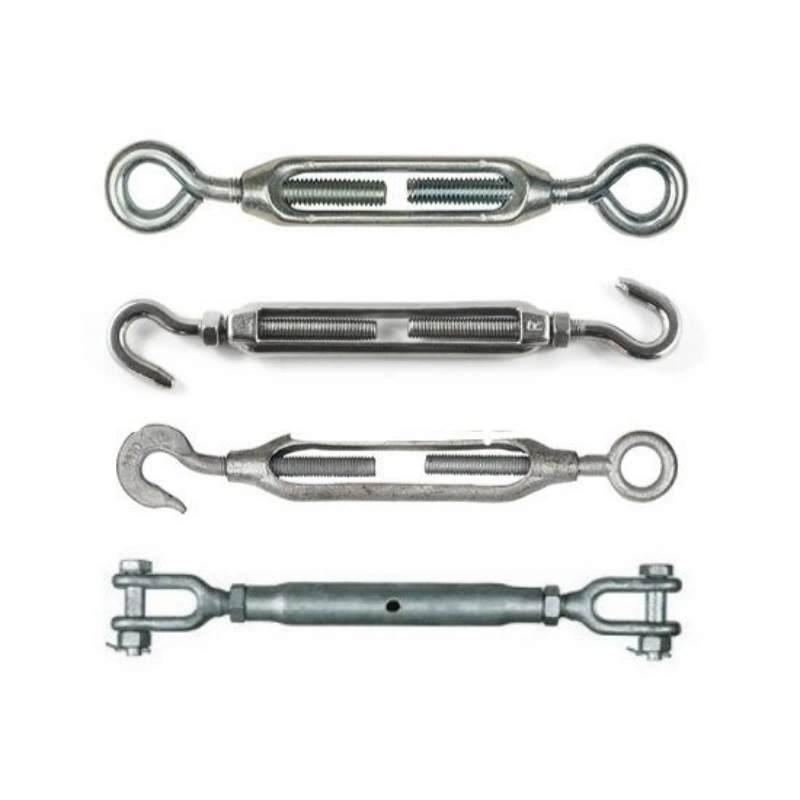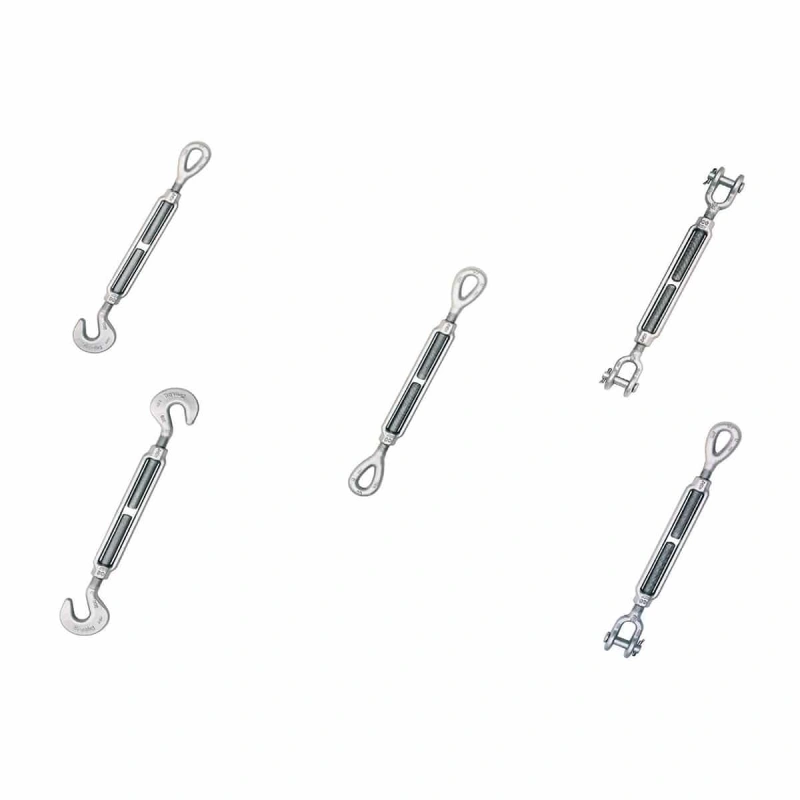Spotting chain sling defects starts with a close inspection of your equipment. You should look for stretching, bending, cracks, wear, corrosion, or heat damage. Regular inspection helps protect you from workplace accidents and keeps your team safe.
Check for gouged links, heat damage, and worn links using the table below:
Defect Type | Description |
|---|---|
Gouged links | Indentations from heavy loads dragged or dropped onto the chain. |
Heat Damage | Discoloration from high temperatures which weakens chain strength. |
Worn links | Reduced the diameter at bearing points from excessive use. |
Inspect chain slings before each job and every shift.
Trained personnel should perform regular checks and document maintenance.
Powerful Machinery delivers certified chain slings for maximum safety in demanding environments.
Key Takeaways
Inspect chain slings before each use. Look for signs of wear, cracks, or corrosion to prevent accidents.
Document every inspection and maintenance action. Keeping accurate records helps track the condition of your equipment.
Follow OSHA guidelines for inspection frequency. Regular checks are essential for maintaining safety in rigging operations.
Remove any damaged slings from service immediately. Never attempt to repair a sling yourself; always consult a qualified professional.
Ensure all chain slings have clear identification tags. This information is crucial for verifying specifications and compliance.
Common Chain Sling Defects
Chain sling defects can compromise safety and efficiency in your rigging operations. You need to recognize these issues early to prevent accidents and equipment failure. The following are the most common defects you may encounter during inspections.
Twisted or Bent Links
Twisted or bent links often result from improper handling or overloading during rigging tasks. You may notice links that do not align with the rest of the chain. This misalignment can create stress points, reducing the overall strength of the sling.
Twisting and bending can also occur when you use the sling for lifting loads that exceed its rated capacity or when you drag the chain across rough surfaces.
Tip: Always inspect each link for signs of twisting or bending before every lift. Replace any sling with deformed links to maintain safety.
Here is a table summarizing commonly reported chain sling defects in heavy lifting operations:
Defect Type | Description |
|---|---|
Stretched links | Links may become elongated due to excessive load beyond working limits. |
Cracks | Structural integrity may be compromised, leading to potential failure. |
Nicks or gouges | Surface damage can affect the sling’s ability to handle loads safely. |
Corrosion | Deterioration due to environmental factors affecting strength and safety. |
Twisting and bending | Improper handling can lead to stress on links, causing potential damage. |
Wear and tear | General degradation from regular use necessitates regular inspections. |
Cracks and Breaks
Cracks and breaks pose serious risks in rigging applications. You should look for visible cracks in the chain or any components. These defects often develop from excessive use, overloading, or physical damage such as nicks and gouges.
Corrosion can also contribute to cracks and breaks by weakening the metal structure.
Excessive use of alloy steel chain slings can lead to wear and tear.
Misconceptions about the working load limit can result in overloading, causing damage.
Physical damage such as nicks, gouges, and corrosion can lead to cracks and breaks.
If you spot any cracks or breaks, remove the sling from service immediately. Never attempt to repair a cracked chain link, as this can lead to catastrophic failure during rigging.
Wear, Elongation, and Corrosion
Wear and corrosion are among the most frequent chain sling defects you will encounter. Regular use causes wear at link connections and on outer surfaces. Elongation occurs when links stretch beyond their original size, often due to lifting loads that exceed the sling’s capacity.
Corrosion, such as rust or pitting, weakens the chain and reduces its load-bearing ability.
Issue | Signs | Action |
|---|---|---|
Wear | Damage at link connections, wear on outer surfaces | Measure diameter; remove if below minimum size. |
Corrosion | Rust, rough patches, pitting | Clean and oil; remove if pitting is visible. |
Elongation | Links that do not fit together correctly | Inspect link-by-link; remove if elongation reaches 20% of original size. |
Note: You should always measure the diameter of worn links and inspect for elongation. Remove any sling that shows significant wear and corrosion to ensure safe rigging operations.
Heat and Chemical Damage
Heat and chemical damage can cause irreversible harm to chain sling materials. Exposure to high temperatures, especially above 90°C (194°F), can weaken synthetic components and reduce the sling’s strength.
Chemical agents may react with materials like polyamide and polyester, leading to physical changes and loss of integrity. Extreme cold can also make polymers brittle, increasing the risk of breakage during rigging.
Chemical agents can cause irreversible damage to chain sling materials through chemical reactions and physical changes.
The maximum operating temperature for synthetic materials is around 90°C (194°F).
Extreme cold can lead to brittleness in polymers, affecting their structural integrity.
If you notice discoloration, melting, or brittleness in your chain sling, remove it from service. Always store slings away from chemicals and extreme temperatures to prevent these defects.
Chain Sling Inspection Steps
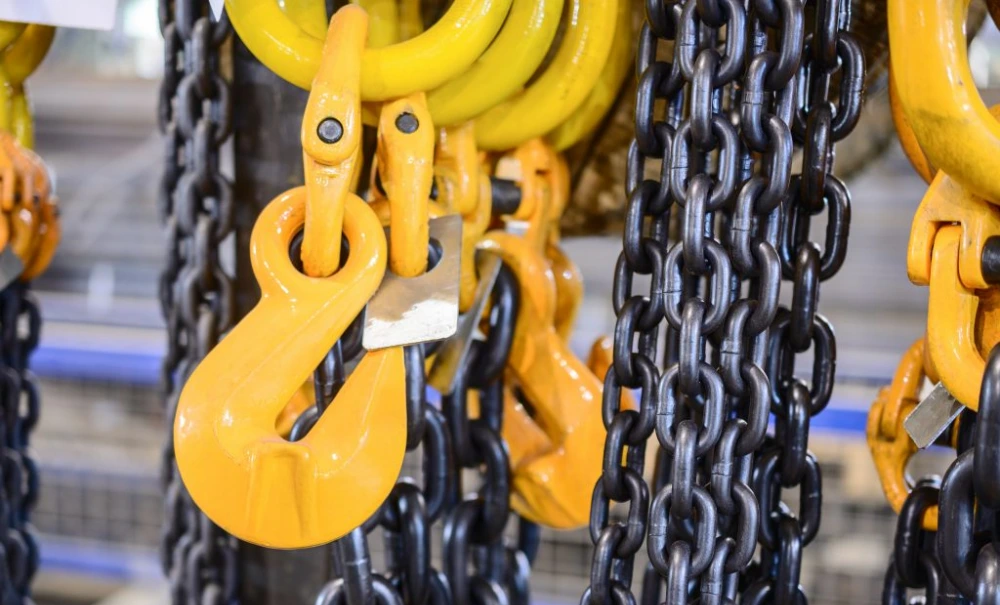
A systematic chain sling inspection process helps you maintain safety and compliance in every rigging operation. You should follow a step-by-step approach to ensure you catch chain sling defects before they become hazards.
Powerful Machinery recommends regular inspection routines to protect your team and equipment.
Visual Check
Start with a thorough visual inspection before each use. Clean the sling to remove dirt and debris. This step lets you see the chain’s surface clearly. Hang or stretch the chain in a well-lit area. Remove any twists and make sure the chain hangs straight.
Examine each link individually by collapsing the chain. This technique separates the links, making it easier to spot wear, corrosion, or elongation.
Inspect for surface corrosion. Clean and oil the chain if you find general rust. Remove the sling from service if you see pitting.
Look for cracks, nicks, gouges, or stretched links. These defects can compromise the chain’s strength.
Check the master link and hooks. Remove the sling if you find any deformation or excessive opening.
Tip: Always verify the identification tag. Confirm the sling’s specifications and load limits before starting any rigging task.
Common mistakes during visual inspection can lead to missed chain sling defects. Use the table below to avoid these errors:
Inspection Step | Description |
|---|---|
Clean the sling before inspection | Ensure the sling is free of debris and contaminants. |
Check the identification tag | Verify the sling’s specifications and load limits. |
Hang or stretch the chain | Inspect in a well-lit area, removing twists and measuring length. |
Link-by-link inspection | Discard if the inner link wear exceeds allowable limits or if damaged. |
Check the master link and hooks | Remove from service if hooks are deformed or opened excessively. |
Measuring and Testing
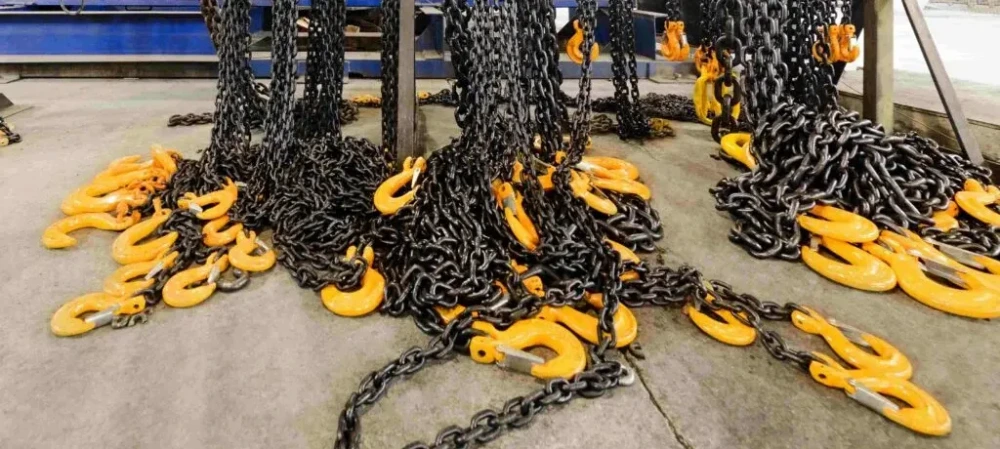
After your visual inspection, move to measuring and testing. Use calipers or gauges to measure the diameter of each link. Compare these measurements to the manufacturer’s specifications. If you find any link below the minimum diameter, remove the sling from service.
Measure the reach from the upper bearing point on the master link to the lower hook. This step helps you detect binding or stretching in the chain.
You should also perform a thorough inspection using non-destructive testing methods. These advanced techniques let you check for internal flaws without damaging the sling. Powerful Machinery recommends using digital reporting tools and mobile inspection apps.
These technologies help you document results quickly and share information with your team.
Advancement Type | Description |
|---|---|
Non-destructive testing methods | These methods allow for thorough inspections without damaging the slings. |
Digital reporting tools | Streamline the inspection process by enabling quick documentation and reporting. |
Mobile inspection apps | Facilitate real-time data collection and communication between inspectors and clients. |
AI and machine learning | Enhance anomaly detection, improving the reliability of inspections. |
Cloud-based platforms | Enable real-time tracking and documentation, crucial for compliance and audits. |
Automation in inspection | Reduces human error and increases efficiency in inspection procedures. |
Drones and remote sensors | Allow inspections in hazardous or hard-to-reach environments. |
Automated data analytics | Help in predictive maintenance by identifying potential sling failures before they occur. |
Innovations in materials | Influence inspection criteria and protocols, improving overall safety standards. |
Simulation-based training modules | Enhance inspector proficiency through practical training experiences. |
Note: Always select the right sling for your rigging application. Never overload a sling. These steps help you prevent accidents and maintain compliance.
Documentation
Proper documentation is a critical part of chain sling inspection. Record every inspection, measurement, and test result. Use digital reporting tools or mobile apps to streamline this process.
Document the condition of each sling, including any defects found and actions taken. Keep records of identification tags, load limits, and inspection dates.
Maintain a log for each chain sling. Include details about repairs, replacements, and removal from service.
Store documentation in a secure, accessible location. Cloud-based platforms make it easy to track inspections and share information with your team.
Review inspection records regularly. This practice helps you identify patterns and schedule preventive maintenance.
A thorough inspection routine, combined with accurate documentation, ensures you meet industry standards and keep your rigging operations safe. Powerful Machinery’s certified chain slings support your commitment to safety and reliability.
Regulatory Standards
OSHA and International Requirements
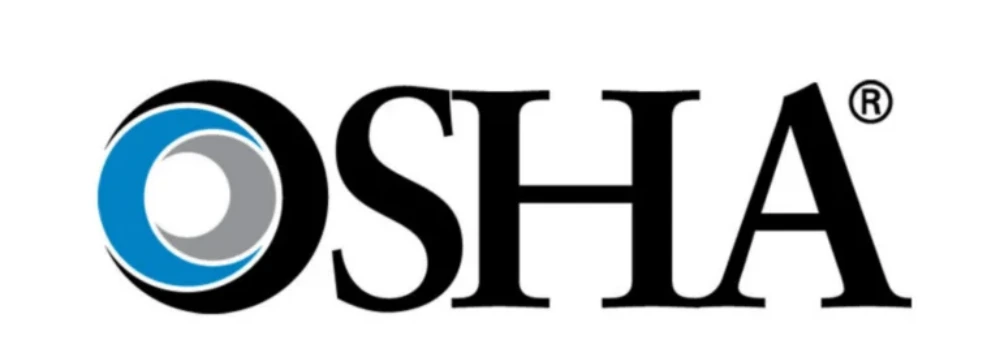
You must follow strict regulatory standards when you inspect chain slings for rigging operations. OSHA sets clear guidelines for OSHA chain sling inspection. You need to inspect rigging equipment, including chain slings, before each use and at the start of every shift.
Frequent OSHA chain sling inspection is essential, especially if you use equipment multiple times a day. OSHA requires you to focus on defects such as corrosion, pitting, twists, bends, and nicks.
You must also complete periodic inspections every twelve months. In harsh environments, increase the frequency of OSHA chain sling inspection to maintain safety.
If you use defective chain slings in regulated industries, you risk legal consequences. Regulations like 29 CFR § 1910.184 (iii) and (d) require you to remove damaged slings from service immediately. California regulations demand clear markings for safe working loads and usage conditions.
International standards also guide your rigging practices. The International Standards Organization (ISO) provides safety recommendations for chain slings and wire ropes. You should know these key standards:
ISO sets guidelines for lifting and rigging practices, including chain slings.
ISO 4309 covers care, maintenance, inspection, and discard procedures for wire ropes.
ISO 16881 series offers safety recommendations for steel wire ropes.
Following these standards helps you keep your rigging operations compliant and safe.
Identification Tags
Identification tags play a vital role in OSHA chain sling inspection and rigging safety. You must check that each chain sling has a tag with all required information. This tag helps you verify the sling’s specifications during inspection and ensures compliance with OSHA and international standards.
Required Information |
|---|
Name or trademark of the manufacturer |
Grade |
Nominal chain size |
Number of legs |
Rated load for at least one hitch type |
Length or reach |
Individual sling identification (serial number) |
Always confirm that the identification tag is present and legible before you use any chain sling for rigging. Missing or unclear tags mean you should remove the sling from service until you resolve the issue. Proper identification supports safe rigging and meets OSHA chain sling inspection requirements.
When to Remove or Repair?
Removal Criteria
You must know when to remove a chain sling from service to protect your team and equipment during rigging operations. Safety authorities set clear criteria for removal.
During inspection, look for broken wires, metal loss, distortion, heat damage, and bad end attachments. Bent hooks and severe corrosion also signal the need for removal. The table below summarizes these criteria:
Criteria | Description |
|---|---|
Broken Wires | 10 broken wires in one rope lay for single-part slings; 5 broken wires in one strand for multi-part. |
Metal Loss | Wear or scraping of one-third the original diameter of the outside individual wires. |
Distortion | Kinking, crushing, or other damage that distorts the rope structure. |
Heat Damage | Metallic discoloration or loss of internal lubricant due to heat exposure. |
Bad End Attachments | Cracked, bent, or broken end fittings from abuse or accidents. |
Bent Hooks | Throat openings exceeding 15% or twisting over 10 degrees. |
Metal Corrosion | Severe corrosion, causing pitting or binding of wire,s warrants replacement. |
Frequent causes for chain sling removal in manufacturing plants include corrosion, abrasion, distortion, and defective welds. You should remove slings with cracked, bent, or broken components.
Always take action if you see evidence of heat damage or hooks twisted more than 10 degrees. Regular inspection and prompt removal prevent rigging failures and support safe maintenance routines.
Repair vs. Replace
When you find a defect during rigging inspection, you must decide whether to repair or replace the chain sling. Repairs should only be performed by the sling manufacturer or an equivalent qualified entity. After any repair, a qualified person must fully test and approve the sling before you return it to service.
Never use worn or damaged alloy steel chain slings or attachments until they are repaired. If welding or heat testing occurs, the sling must be reconditioned and proof tested by the manufacturer.
Mechanical coupling links or low-carbon steel repair links are not acceptable for fixing broken chain lengths.
Always prioritize safety and compliance in your maintenance decisions.
Repairing chain slings often costs less than replacing them. In large-scale operations, repair costs are typically 40-60% lower than replacement costs. This cost advantage is especially important in price-sensitive markets. However, you must never compromise safety for savings.
If a sling fails inspection or cannot be restored to its original strength, replacement is the only option. Consistent rigging maintenance and careful documentation help you make informed decisions and keep your operations safe.
Tip: Schedule regular inspection and maintenance for all chain slings. Remove or repair any sling that shows signs of damage to maintain safe rigging practices.
Powerful Machinery Chain Slings: Safety Tips
Training and Best Practices
You play a critical role in maintaining rigging safety when using Powerful Machinery chain slings. Proper training ensures you understand how to select, use, and inspect chain slings according to standards like ASME B30.10.
You should receive regular training that covers securement, correct use of hooks and shackles, and how to inspect chain slings before each lift. Training also helps you manage load swing and understand how lifting angles affect capacity.
Make sure all personnel involved in rigging receive thorough training and know the risks.
Schedule refresher training sessions to keep everyone updated on safety practices.
Teach correct lifting techniques, including how to protect slings from sharp edges and avoid shock loading.
Emphasize the importance of choosing the right sling for each rigging application, considering load weight, size, and environmental conditions.
Tip: Always inspect chain slings and accessories before use. Follow manufacturer guidelines for safe rigging operations.
Inspection Frequency
You must inspect Powerful Machinery chain slings regularly to maintain compliance and safety in your rigging operations. Inspection frequency depends on service conditions. Use the table below to guide your inspection schedule:
Service Condition | Inspection Frequency |
|---|---|
Normal Service | Yearly (Annual Inspection) |
Severe Service | Monthly to Quarterly |
Special Service | As recommended by a Qualified Person |
Inspect chain slings before each use and after every rigging job. Store slings in a designated, dry place to prevent damage. Keep slings off the ground and away from chemicals. Protect them from extreme temperatures and direct sunlight. Clean slings before storage to prevent material degradation.
Use padding for sharp edges during rigging to prevent cuts and abrasions.
Avoid storing slings in chemically active environments.
Always match sling length and configuration to the rigging task.
Powerful Machinery’s reputation for safety and reliability comes from strict adherence to inspection routines, high-quality materials, and expert manufacturing. You can trust their chain slings to deliver consistent performance in demanding rigging environments.
Conclusion
You protect your team and equipment when you spot chain sling defects early and act fast. Regular inspections help you catch stretching, nicks, or wear before they cause accidents.
Daily checks, as OSHA requires, serve as your first line of defense.
Following safety standards keeps your lifting operations reliable and efficient.
Certified chain slings offer strength, durability, and easy maintenance in tough conditions.
Powerful Machinery stands behind your commitment to safety. Review your inspection routines and always choose certified products for peace of mind.
FAQ
What is the most common defect you find in chain slings?
You often find wear and elongation at link connections. These defects result from frequent use and heavy loads. Always measure link diameter and check for stretching before each lift.
How often should you inspect chain slings?
You should inspect chain slings before every use and at least once a year for normal service. Severe or special service conditions require monthly or quarterly checks.
Service Condition | Inspection Frequency |
|---|---|
Normal | Yearly |
Severe | Monthly/Quarterly |
Can you repair a damaged chain sling yourself?
You should never repair chain slings on your own. Only the manufacturer or a qualified professional can perform repairs. Always remove damaged slings from service immediately.
Tip: Trust certified experts for all repairs to maintain safety.
What information must appear on a chain sling identification tag?
You must check for the manufacturer’s name, grade, nominal chain size, number of legs, rated load, length, and serial number. Missing or unreadable tags mean you should not use the sling.
Why choose Powerful Machinery chain slings for your rigging needs?
You get certified products, rigorous testing, and reliable performance. Powerful Machinery chain slings meet international safety standards and deliver strength in demanding environments.
Certified for safety
Custom-engineered solutions
Trusted by global industries

